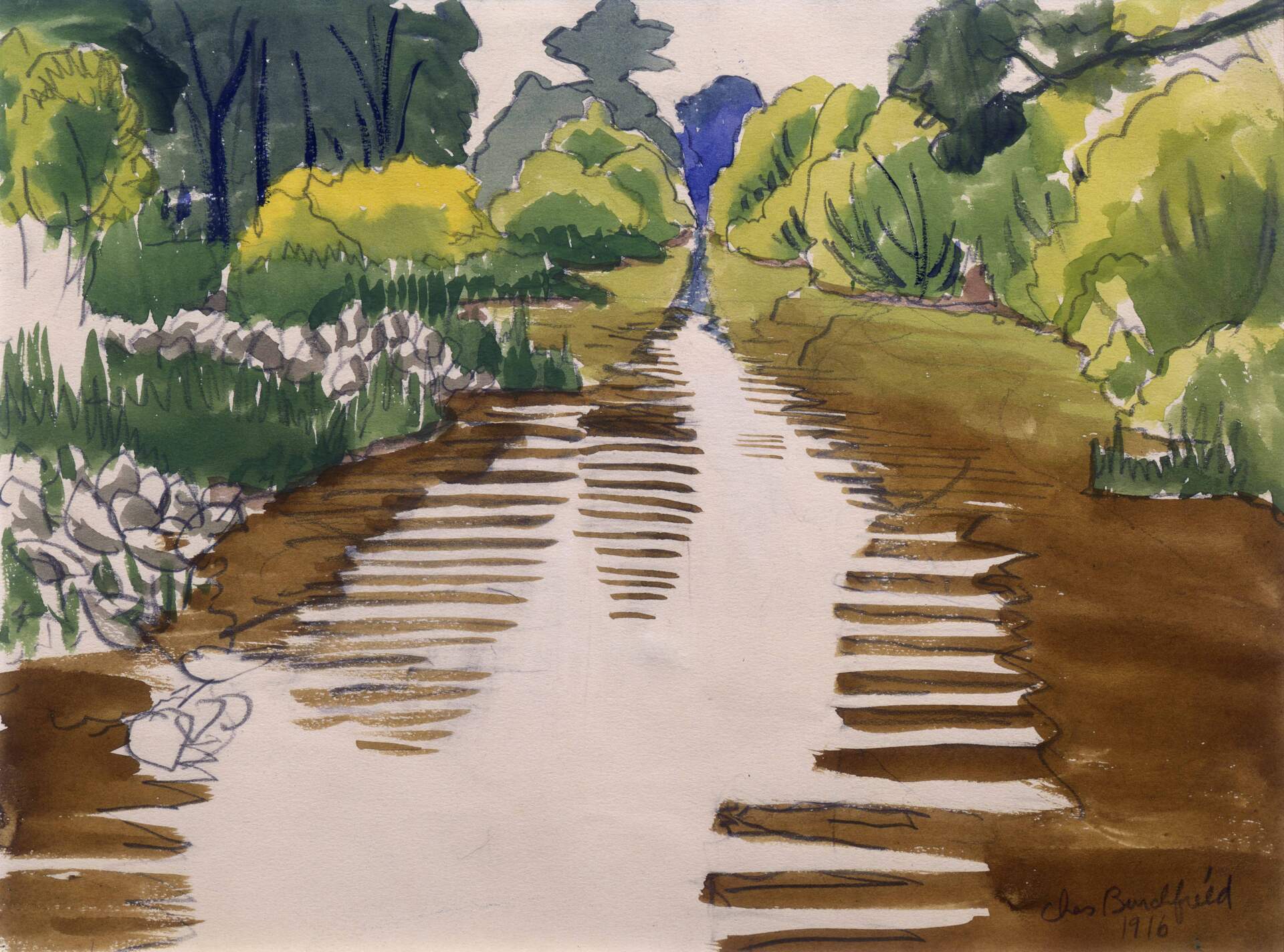
Charles E. Burchfield (1893-1967), Broken Reflections, June 1916, watercolor and pencil on paper, 9 x 12 inches, Image courtesy of the Burchfield Penney Art Center Archives
Charles E. Burchfield, Journals, June 3, 1914
Saturday, Jun 3, 2023
Off at 6:00 Eastern time. Sky obscured by mists. Sun shines dimly. All things in a grand harmony of mist and dew. Grass is white; trees sparkle in a scarcely noticeable breeze.
Meadowlarks whistle in Three-Tree territory. Bobolinks. The walk down painter road attended with many things. The three blackbirds. Liquid whistle. One bird a puzzler. Hear him in a tall cherry-tree. Three distinct calls. One identical with Flicker’s. Another similar but rasping. Third a single note—clear and bell-like—like French siren. A stone causes 2. him to fly out but I can get no view of him. Flies ahead of me down the road but I am unable to get near him. Finally disappears.
See what I think is indigo bird. It flies away in the wind over a wheat-field.
See “puzzler” again. A bird slightly smaller than robin. – Breast, throat and undertail white, back light olive brown.
Beauty of mists in Dutchman’s Cigar mountain blue. Just curling edges of trees visible as struck by sun’s rays. Looking directly towards sun, the trees seem like Sheets of variously tinted green paper set one behind the other. 3. Mists seem poured out by sun’s rays. Beauty of whitish green locusts against opaque sky.
The road beyond more secluded— edged with trees. “Millions” of birds. Flickers, chewink, song-sparrows, blue-jays, cardinals, many unfamiliar ones— these are but the ones I “heard” Hear unfamiliar bird call—not unlike the sound of a squeeky (sic) windmill tho without that harshness. I proceeded in the direction of the tree whence came the call, but had not gone far when it’s author took alarm and flew to the south. Presently hear call again I look and barely distinguish him on a dead 4. tree to the south. He flies up and starts to his original perch, calling as he goes. I discern smaller bird chasing it, and the chase continues after they reach the tree. The large bird finally flies out with something in its beak. Its beak & head suggests a hawk and its size a sparrow-hawk.
Hear a nuthatch.
Charles E. Burchfield, Journals, June 3, 1914